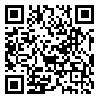Volume 11, Issue 1 (Autumn-In Press 2025)
Health in Emergencies and Disasters Quarterly 2025, 11(1): 0-0 |
Back to browse issues page
Ethics code: IR.BMSU.BAQ.REC.1401.069
Download citation:
BibTeX | RIS | EndNote | Medlars | ProCite | Reference Manager | RefWorks
Send citation to:



BibTeX | RIS | EndNote | Medlars | ProCite | Reference Manager | RefWorks
Send citation to:
Rajai N, Parandeh A, Azizi M, Mahmoudi H, Abbasiyan K. Self-Sacrifice in Nursing in the COVID-19 Pandemic: Concept Analysis with the Rogers Approach. Health in Emergencies and Disasters Quarterly 2025; 11 (1)
URL: http://hdq.uswr.ac.ir/article-1-624-en.html
URL: http://hdq.uswr.ac.ir/article-1-624-en.html
1- Critical Care Nursing Department, Faculty of Nursing, Aja University of Medical Sciences, Tehran, Iran.
2- Trauma Research Center, Nursing Faculty, Baqiyatallah University of Medical Sciences, Tehran, Iran.
3- Health in Disasters and Emergencies Department, Faculty of Nursing, Aja University of Medical Sciences, Tehran, Iran.
4- School of Nursing, Trauma Research Center, Clinical Sciences Institute, Baqiyatallah University of Medical Sciences, Tehran, Iran. ,h.mahmoudi53@yahoo.co.in
5- School of Medicine, Aja University of Medical Sciences, Tehran, Iran.
2- Trauma Research Center, Nursing Faculty, Baqiyatallah University of Medical Sciences, Tehran, Iran.
3- Health in Disasters and Emergencies Department, Faculty of Nursing, Aja University of Medical Sciences, Tehran, Iran.
4- School of Nursing, Trauma Research Center, Clinical Sciences Institute, Baqiyatallah University of Medical Sciences, Tehran, Iran. ,
5- School of Medicine, Aja University of Medical Sciences, Tehran, Iran.
Abstract: (51 Views)
Background: Sacrifice is a fundamental professional value in nursing, which became particularly prominent during the pandemic of COVID-19. This study investigates the idea of self-sacrifice in nursing during this period, employing Rodgers’s evolutionary model as the analytical framework.
Materials and Methods: Rodgers’s concept analysis method was applied. Relevant literature was searched in CINHAL, MEDLINE, Web of Science, SCOPUS, PubMed, Magiran, Iran Medex, and SID databases using keywords related to self-sacrifice in nursing. Seventeen related articles were selected for analysis.
Results: Self-sacrifice was a defining feature of nursing during COVID-19, involving prioritizing patient care over personal well-being despite severe risks. Internal factors influencing self-sacrifice included personal commitment, stress reduction, and professional excellence. External factors encompassed societal expectations, media influence, and the high-risk nursing environment during the pandemic. While self-sacrifice strengthened professional identity and personal growth, it also resulted in adverse effects, including work attendance despite illness (presenteeism), emotional and physical exhaustion (burnout), reduced patient safety, and a greater likelihood of leaving the profession
Discussion: The COVID-19 pandemic highlighted the dual nature of self-sacrifice in nursing. While it fosters professional dedication and resilience, excessive self-sacrifice can negatively impact nurses’ well-being and patient care quality. Recognizing and addressing these challenges is essential for maintaining a balanced professional identity.
Conclusion: Although self-sacrifice is an integral part of nursing, its adverse effects must be mitigated by promoting self-care and improving working conditions to ensure sustainable commitment among nurses.
Materials and Methods: Rodgers’s concept analysis method was applied. Relevant literature was searched in CINHAL, MEDLINE, Web of Science, SCOPUS, PubMed, Magiran, Iran Medex, and SID databases using keywords related to self-sacrifice in nursing. Seventeen related articles were selected for analysis.
Results: Self-sacrifice was a defining feature of nursing during COVID-19, involving prioritizing patient care over personal well-being despite severe risks. Internal factors influencing self-sacrifice included personal commitment, stress reduction, and professional excellence. External factors encompassed societal expectations, media influence, and the high-risk nursing environment during the pandemic. While self-sacrifice strengthened professional identity and personal growth, it also resulted in adverse effects, including work attendance despite illness (presenteeism), emotional and physical exhaustion (burnout), reduced patient safety, and a greater likelihood of leaving the profession
Discussion: The COVID-19 pandemic highlighted the dual nature of self-sacrifice in nursing. While it fosters professional dedication and resilience, excessive self-sacrifice can negatively impact nurses’ well-being and patient care quality. Recognizing and addressing these challenges is essential for maintaining a balanced professional identity.
Conclusion: Although self-sacrifice is an integral part of nursing, its adverse effects must be mitigated by promoting self-care and improving working conditions to ensure sustainable commitment among nurses.
guideline: Review |
Subject:
General
Received: 2024/05/28 | Accepted: 2025/02/23 | Published: 2025/09/17
Received: 2024/05/28 | Accepted: 2025/02/23 | Published: 2025/09/17
Send email to the article author
| Rights and permissions | |
 |
This work is licensed under a Creative Commons Attribution-NonCommercial 4.0 International License. |




